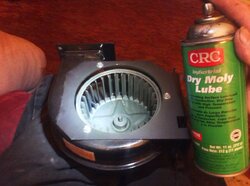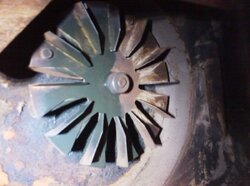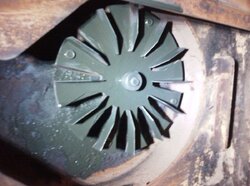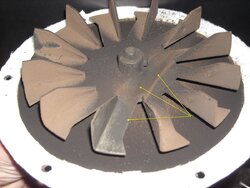Hello
I use TufOil Lubit-8 on all the motor shafts that Imacman recommended and it works great.
This season I am trying dry moly spray that Stoveguy2esw recommends, on both blower fan blades. The spray graphite I used on the combustion blower last year just about wore off. The spray graphite on the convection blower last year did keep the dust down quite alot. I cleaned off the graphite which contained a small layer of dust embedded in the graphite. The spray moly is a little harder so I expect it may stand up better on the exhaust blower and not embed dust on the convection blower.
We will see. Anyone else try it?
See difference in spraying the two on here.
See dry moly spray on convection blower squirrel cage fan blades below.
I use TufOil Lubit-8 on all the motor shafts that Imacman recommended and it works great.
This season I am trying dry moly spray that Stoveguy2esw recommends, on both blower fan blades. The spray graphite I used on the combustion blower last year just about wore off. The spray graphite on the convection blower last year did keep the dust down quite alot. I cleaned off the graphite which contained a small layer of dust embedded in the graphite. The spray moly is a little harder so I expect it may stand up better on the exhaust blower and not embed dust on the convection blower.
We will see. Anyone else try it?
See difference in spraying the two on here.
See dry moly spray on convection blower squirrel cage fan blades below.





